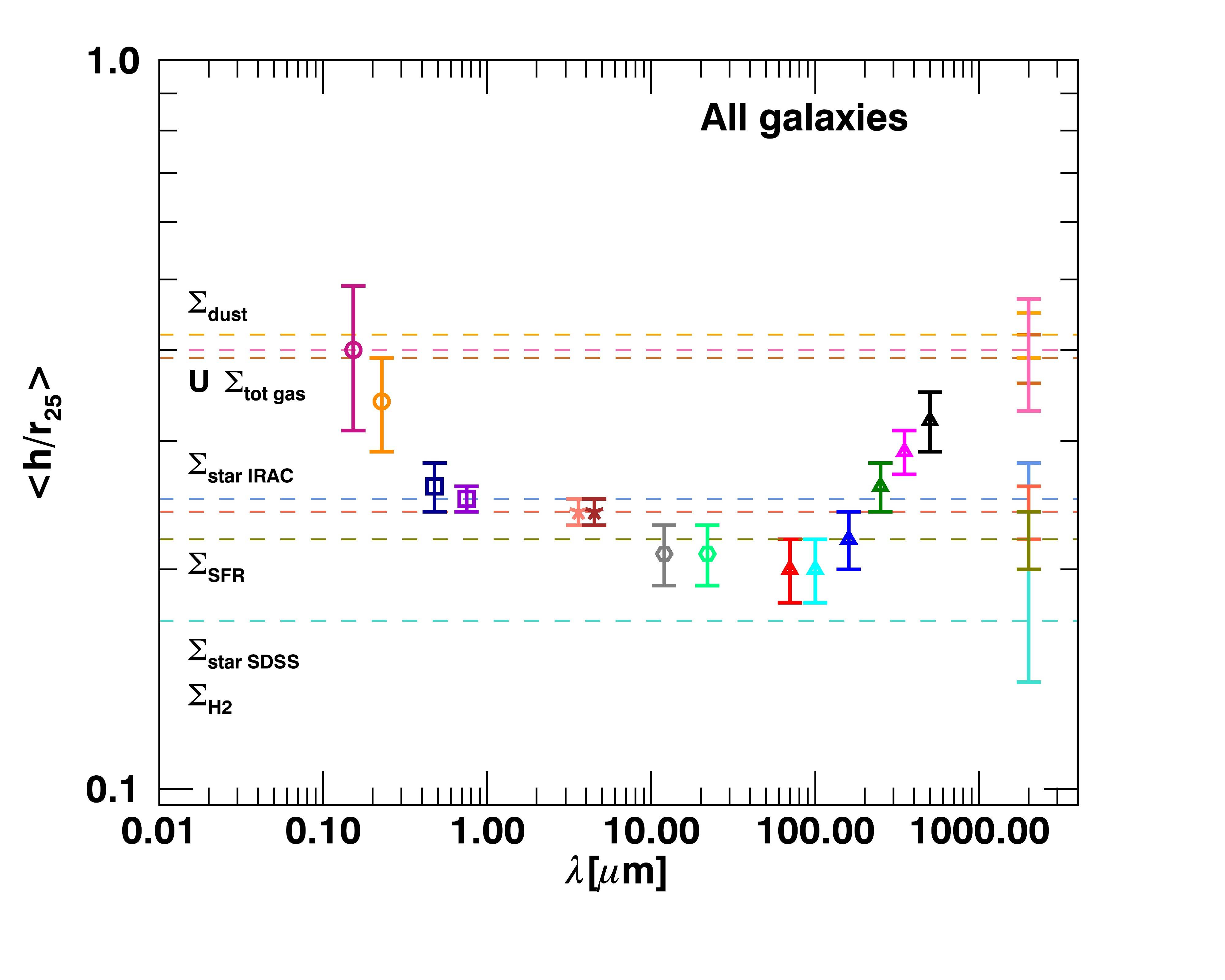DustPedia measures the scale-lengths in the Local Universe
The paper Casasola et al. (2017), recently accepted by A&A, is the first scientific DustPedia publication, realized by exploiting the multi-wavelength (from UV to sub-mm wavelengths) DustPedia database. It is led by Viviana Casasola and involves Simone Bianchi (co-PI of DustPedia), Laura Magrini, and the whole European DustPedia team.
This work presents the spatial variations of dust, stars, gas, and star-formation rate (SFR) of a sample of 18 nearby, spiral, face-on galaxies extracted from the DustPedia sample, by analyzing their surface brightness and mass surface density profiles. It provides the first 'direct' confirmation of the large gradients in the dust disks, which were 'indirectly' found by fitting the extinction lanes in optical images of edge-on galaxies.
Although each galaxy has its own peculiar behaviour, we identified some common trends of the exponential scale-lengths vs. wavelength, highlighted in Figure 1.

Figure 1: Mean scale-length normalized with respect to r25 of all sample galaxies as a function of wavelength. The scale-lengths of mass (of dust, gas, and stars) and SFR surface density profiles and the scale-length of radiation field (U) profile, normalized with respect to r25, are plotted as with horizontal lines because they are not associated with a wavelength. They and the corresponding error bars are drawn at λ = 2000 micron.
The main result is that, on average, the dust mass surface density scale-length is about 1.8 times the stellar one, and close to that in the UV. This result is somewhat surprising and unexpected.
A mechanism that could explain our findings is a change in the typical lifetimes of grains against destruction by shocks, with a longer lifetime at larger radii. Because of the similarity between UV and dust scale-lengths, it is tempting to associate this mechanism to the inside-out galaxy formation scenario that is used to explain, together with dust extinction, the larger scale-lengths of radiation from the younger stellar component.
The radiative transfer analysis of galaxies we are planning to do within DustPedia consortium will shed a light on the true contribution of dust extinction to the shaping of the UV and optical appearance of spiral galaxies, and provide a detailed description of the disk surface brightness across the spectral energy distribution of dust emission.
References:
Casasola, V., Cassarà, L. P., Bianchi, S., Verstocken, S., Xilouris, E., Magrini, L., et al. 2017, “Radial distribution of dust, stars, gas, and star-formation rate in DustPedia face-on galaxies”, Accepted for publication in Astronomy & Astrophysics.
Davies, J. I., Baes, M., Bianchi, S., et al. 2017, PASP, 129, 044102,"DustPedia: A Definitive Study of Cosmic Dust in the Local Universe"



